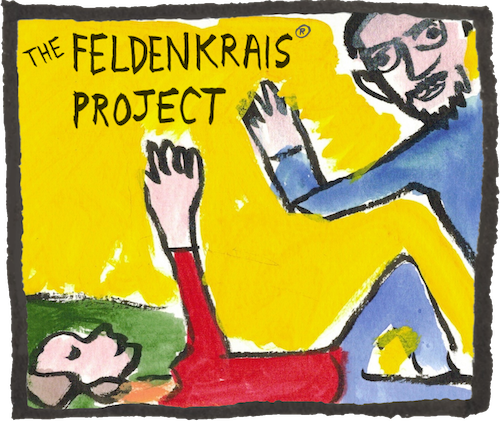Freeing the Shoulders by Rolling the Arms (Patrons)
Mostly back-lying, arms in a "letter T" position. Improving the function and mobility of the shoulders by connecting them more skillfully with the chest, spine, and head. Particular attention is given to the neck and to the spine between the shoulder blades.
We offer over 50 free lessons, but this one's just for our Patron-level donors. You can learn about it in the free lesson notes and comments below, but to access the audio you’ll need to join The FP as a Patron. Learn more
Got a question for Nick, or a thought about this lesson?
Use the comments section below! Public comments build our community and help search engines find us.




I think my shoulders and the T position really wasn’t comfortable for me so I brought my arms further down and it was interesting I felt guilt coming up for me for breaking the rules! But it felt better, even though it was hard to choose to change for comfort
Excellent choice, thank you for sharing. I’ve updated the Comfort & Configuration tab to include your advice. I’m also glad you mentioned the guilt! So many of us are rule-followers, but adapting the lesson to your comfort is essential. May your experience help others reckon with similar challenges.
Really challenging lesson for me but finally feel that, thanks to your approach to the lesson, I am beginning to make sense of some timing issues in the rotation of the shoulder in relation to the engagement of particular back muscles that for some time have not participated. I am very curious about this element of the forehead and chin travelling together. With a history of violin playing I feel this movement profoundly differently from one side to the other and I am wondering if there are other lessons that explore this more fully. I remember a series that I did in my second year of the training that were in sitting whilst leaning back on the hands and circling the head without turning the face to allow the movement to come from the sternum, ribs and thoracic spine as opposed to the neck and cervical spine. Any suggestions?
I’m developing a few future Patrons lessons — and an upcoming Deep Dive [Update: here it is!] — with some of these subtleties in mind, so stay tuned. In the meantime have you tried the lesson in the January 2022 Patrons Quarterly recording? I’m in the process of converting it to audio, but you may want to dive right in. It’s related to the lesson you’re remembering.
Thanks Nick. I will take a look.
Wonderful antidote to a day spent raking and spade lifting! I am finding this practice to be so helpful for recovery as well, as hopefully, for the learning of better ways of using my body outside of practice. Thank you as always for your clarity of instruction.